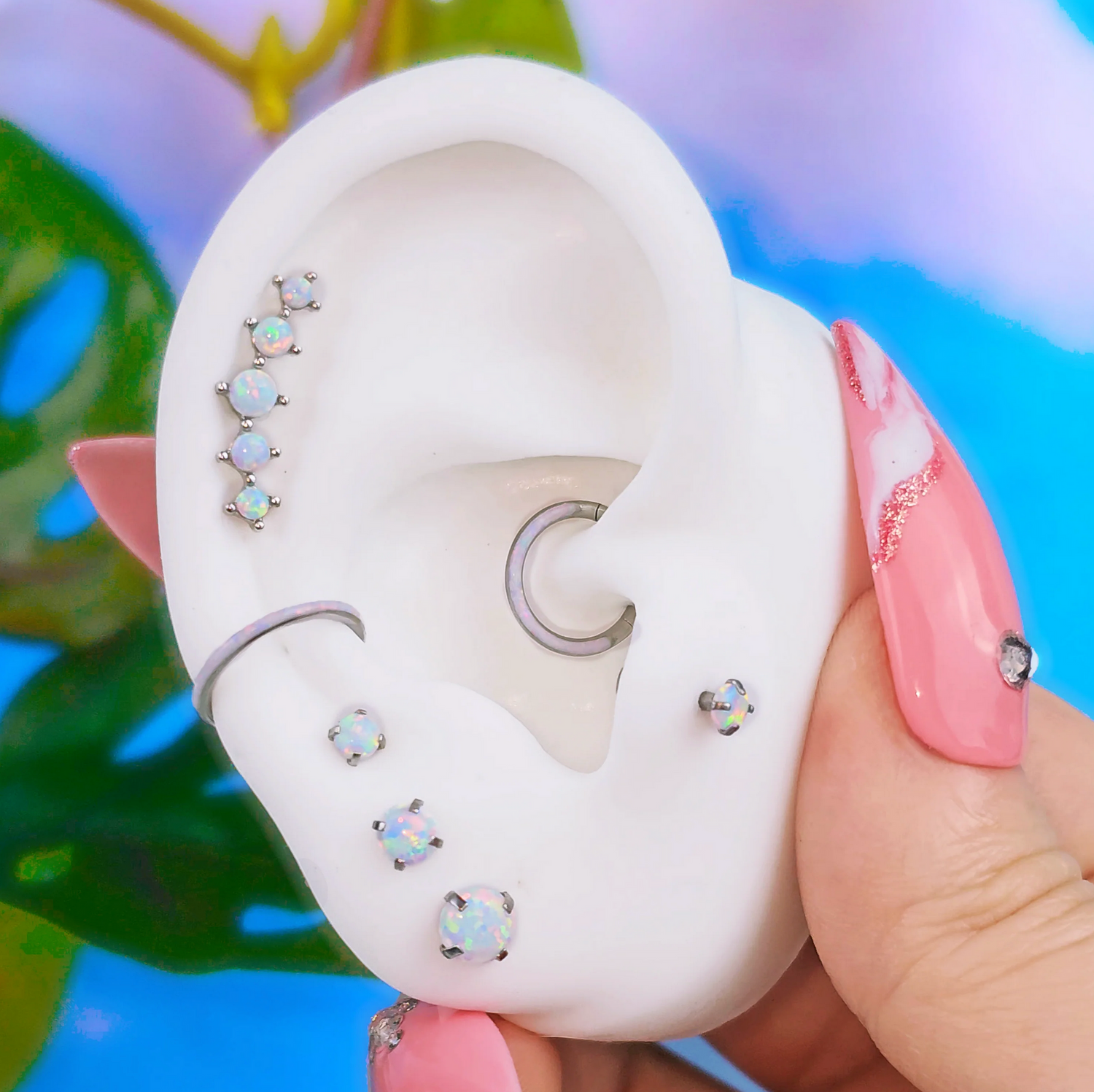Opals are super-hot these days. Ya know what else is hot? Opalite. And Moonstone. Which is great because all three types of stone are gorgeous but…. They also look a lot alike. What is the difference between them? Is there a difference? Well, there is definitely a difference and today we’re going to talk about what those differences are and how they may or may not affect you.
Opal
Opal is a naturally occurring stone that is found in nature – this is specifically called “natural opal”. It can also be grown in a lab, which is referred to as “synthetic opal”. Synthetic opal is still opal, and being that it is man-made, it comes with extra options. It can be found in more colors (i.e. - pink, blue, purple, green, etc.) for a start. It’s also easier to cut so the actual jewelry made with it might offer more shapes. The other major difference is the price point. Synthetic opal is considerably more affordable than natural. If there are two identical opal pieces, the synthetic one will be considerably less expensive than the natural.
Moonstone
Moonstone is also a naturally occurring stone but is considerably more common than opal. It’s easily found in, not only jewelry, but also in simple tumbled forms at any gem or crystal shop. It’s also going to be significantly lower in price point than natural opal. It is an entirely different type of stone than opal or opalite and comes in a variety of colors including blue, rainbow, and pink. If you look at opal and moonstone side-by-side, they’re actually pretty easy to tell apart in many instances. Even rainbow moonstone, which sort of resembles a white opal, has more of an “oil slick” effect within it, as opposed to “spots” of color like within an opal. The body of the stone can also be less opaque than an opal.
Opalite
While opalite is still a stone, it is never found in nature. It is an entirely man-made creation that is somewhat similar in structure to glass. It’s inexpensive and easily found, with a look that mimics opal without the “flash” sort of color-play you would see in a rainbow moonstone. If you shift it around in your hand, the colors within it don’t really move as much.
In conclusion...
So, let’s break this down. Opal is not opalite. Opal is more fragile and more costly than opalite and while they look somewhat similar, they are not in any way related despite the names. Opals can be found in nature, opalite cannot. Moonstones are entirely different from either one in appearance. They, like opal, can be found in nature but are unlikely to be grown in a lab due to their ubiquitousness in their natural form. Both moonstone and opalite are stronger than opal, due to opal having a unique and fragile crystal structure. All three may look somewhat alike but with some practice it’s easy enough to tell them apart. And while moonstone and opalite are relatively affordable, natural opal is going to be considerably more expensive.
What does this mean for your jewelry?
Actually, not very much unless you want it to. If you are very specific about wanting natural opals, you’re going to pay more. If you like the look of opalite, does it really matter that it was grown in a laboratory? (Nope, and nobody will know unless you tell them.) Moonstone is lovely and gives a look similar to opals while having a character all its own. If you prefer natural stones and are on a budget, rainbow moonstone may be the compromise you’re looking for. If you want a hot pink opal or are on a budget, a synthetic opal should fit the bill and in all odds nobody will be able to tell the difference. It all comes down to what YOU want and what you are comfortable wearing and paying for. Being grown in a lab doesn’t make opalite any less gorgeous and wearing it doesn’t make YOU any less amazing. So now that you have a basic grasp of the differences between the three, you can make a fundamentally informed choice about what you want to buy and what is right for YOU. Lovely, unique, you. Happy piercing…and happy shopping!









